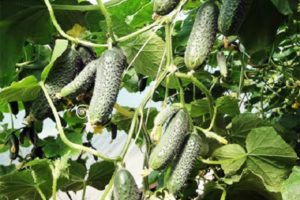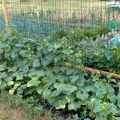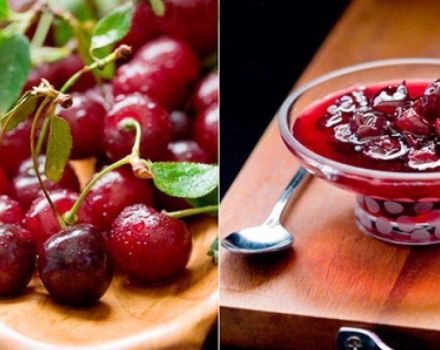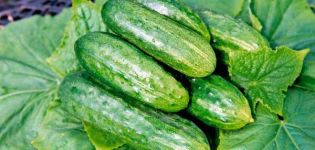Characteristics and description of the Masha cucumber variety, their planting and care
Masha cucumbers are very popular among gardeners and gardeners. This is due to the fact that this variety has many advantages. Among them, it is worth highlighting fast ripening, high resistance to various diseases, as well as good taste. Cucumbers of this variety are often grown for sale. If you decide to opt for this crop, then you should carefully study the description of the variety.
Variety characteristics
Masha cucumber variety belongs to hybrids. The plant is presented as a determinant bush with medium vegetation. The leaves are small and wrinkle slightly. Cucumbers Masha f1, which will be described below, have predominantly female flowering, which eliminates the formation of barren flowers. As a result, it has a positive effect on yield.
In terms of yield, this variety is the record holder. Up to 7 ovaries are formed in the nodes. This makes it possible to collect more than 10 kg of vegetables per square meter. It should be borne in mind that you can get the first harvest 6 weeks after planting the plant in the ground. The bush produces crops until mid-autumn. Therefore, agricultural technology can be used for collection.
Description of gherkins
Masha cucumbers have a cylindrical shape. They have pronounced tubercles with white fluff. The rind is dark green in color with light streaks and few spots. Cucumber Masha f1 has high commercial characteristics. Therefore, this variety is often grown for further sale.
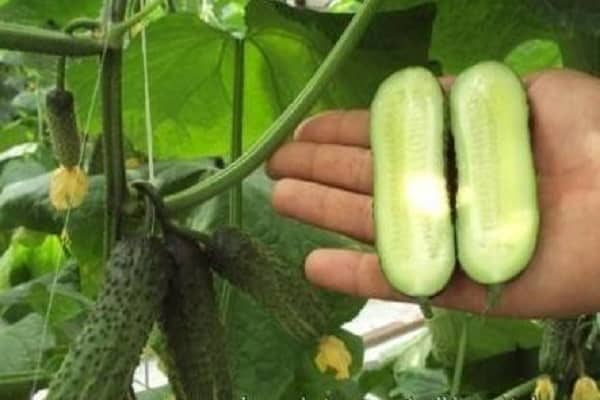
The average length of the cucumbers is 11 cm, and the weight is 100 g. In diameter it reaches 3.5 cm. Vegetables have a crispy and juicy pulp. This makes them ideal for canning as well as pickling. Important: To increase the yield, it is worth removing vegetables from the bush, the length of which has reached 9 cm and more.
The distinctive features of the Masha f1 cucumber variety include high resistance to various diseases. As indicated by the characteristic of culture, it resists well cucumber mosaic and powdery mildew.
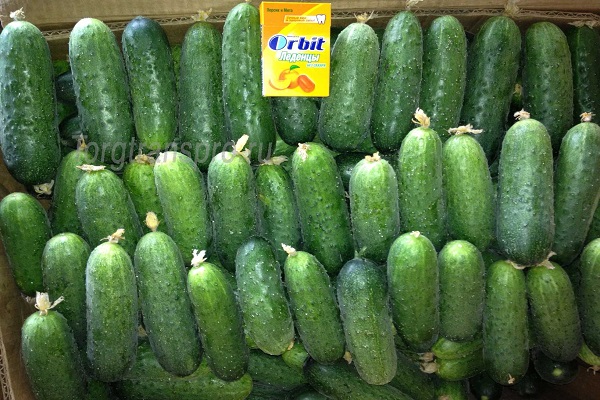
Growing features
The Maria variety is optimal for growing in unprotected ground, as well as in greenhouses and other film covers. To ensure high yields, when planting plants, special attention is paid to the composition of the soil. It should be light and fertile. To improve its characteristics, the beds are fed with organic substances. The process is best done in the fall.
You can achieve high results in terms of soil fertilization with compost and mullein.To make the soil lighter, experts recommend growing and covering the soil with green manure.
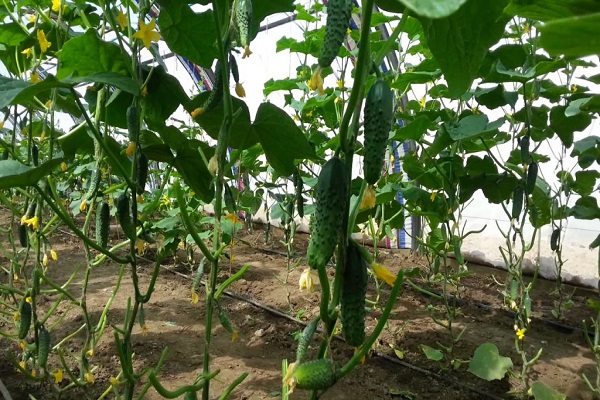
If we are talking about growing plants in greenhouses, then before planting it is worth decontaminating the soil. To solve this problem, bleach, potassium permanganate, phytosporin and other drugs that have certain properties are used. Before using them, you should carefully study the instructions. The use of the preparation in large quantities can lead to deterioration of the properties of the soil.
Cucumbers of this variety are not recommended to be grown in areas where pumpkin crops previously germinated. Otherwise, you should not count on a high yield of plantings.
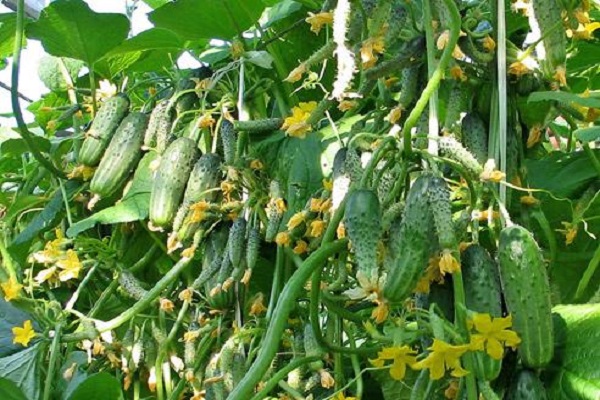
Methods for growing cucumbers
Maria cucumbers can be grown in two ways, which have certain characteristics:
- Seedling method. Preparation should be done in April. Each seed of a cucumber is planted in a separate container. Special attention is paid to temperature conditions. The air temperature should be 25 C. A week before landing in the ground, it drops to 20 C. If this is not done, then this can lead to the death of seedlings against the background of a sharp drop in temperature. When the plant has 4 full leaves, it can be transplanted into a greenhouse or on a breast in open ground.
- Planting seeds. Seed planting is carried out at the end of May. They sink into the ground to a depth of no more than 3 cm. After disembarking, the bed is covered with a film. This will keep moisture in the soil and create a constant temperature regime.
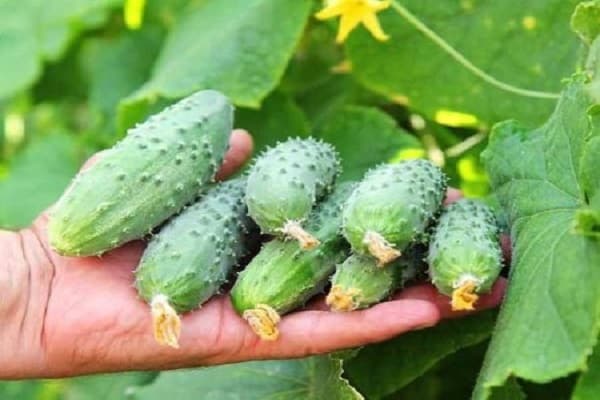
Important: Before planting, the seeds are treated with a nutrient composition. This eliminates the need for pre-soaking.
Seedlings, as well as seeds of Masha f1 cucumbers, are grown so that 1 m2 there were no more than 4 bushes. Otherwise, the crop yield will significantly decrease.
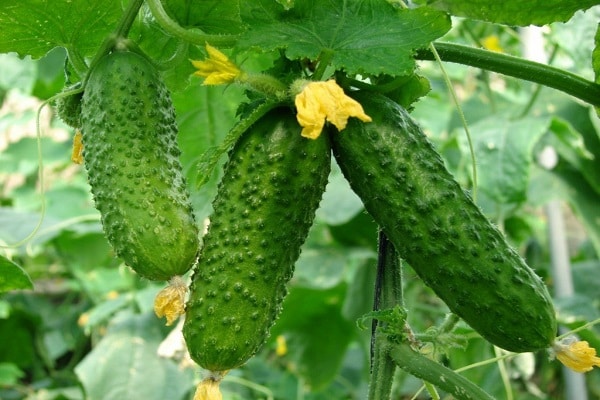
How to care for a plant
To get a high yield from planting, it is necessary to properly care for the plants. In the process, you will need to do the following:
- Watering. The amount of the crop will depend on this process. Cucumbers are watered no more than twice a week. In drought, watering is carried out every day. When a bush grows, it needs a sufficient amount of moisture. Therefore, it is worth checking the condition of the soil periodically.
- Weeding. The process must be carried out very carefully. The fact is that f1 cucumbers have a superficial root system. Careless weeding can damage it.
- Hilling. This manipulation should be carried out no more than twice during the entire season.
- Top dressing. Plant fertilization is carried out throughout the season. This is done for the first time when the first two leaves appear on the plant. Further feeding is done every two weeks. For this, it is recommended to use a manure solution. 1 liter of the substance is diluted in a bucket of water. If you add ash to the solution, this will lead to active growth of plants.
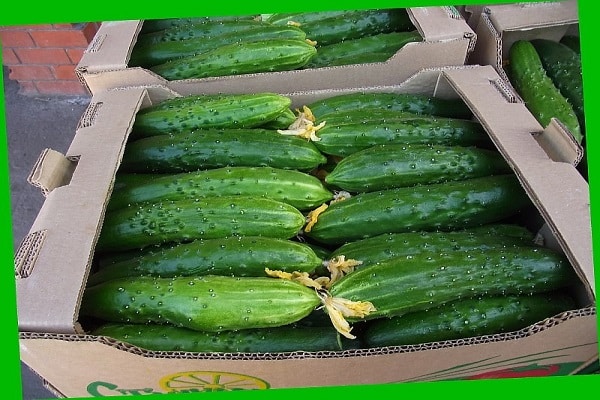
Cucumbers can be fed with minerals and chemicals. But, this must be done very carefully. The high content of such substances in vegetables can cause significant harm to human health.
Harvesting
Once ripe, Mashenka f1 cucumbers can be harvested every day. If you do not pluck the gherkins for a long time, this will lead to their overripe. As a result, they will lose their taste. In addition, ripe cucumbers negatively affect the growth of other vegetables. Also, timely harvesting of gherkins will significantly increase the yield of the crop.
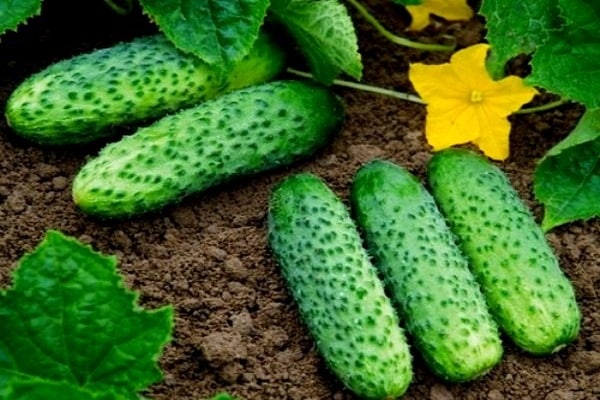
Harvesting must be done very carefully. This is due to the fact that the cucumber stems are very tender and brittle. They are often intertwined. If you pull the cucumber sharply while harvesting, it can damage the stem. As a result, it may break off. Severely damaged bushes quickly disappear, which leads to a decrease in yield.
As for the yield, more than 2 kg of vegetables can be harvested from one bush. Thanks to this, the Maria variety is especially popular among gardeners and gardeners. This is proved by the reviews that are left by satisfied agronomists.
